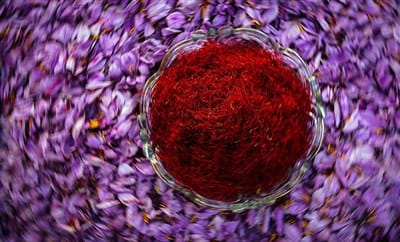Planting saffron in Markazi province will increase
The deputy director of the Horticultural Organization of the Jihad-e-Agriculture Organization of the Markazi Province announced the increase in the cultivation of saffron in the province.
Ahmad Asadi said in an interview with Isna’s correspondent: “Due to the importance of developing saffron in the province in line with the need for water and its proportion with the province’s climate, we are developing this plant in the province. In this regard, several educational classes have been held in technical and bachelor’s thesis, and gardening experts work in the field of saffron fields and gardens.
Deputy Director of Horticulture of the Jihad-e-Agriculture Organization of the Markazi province, pointing out that a lot of operations are being carried out on the cultivation of saffron through manpower, adding that a lot of manpower is needed for the cultivation and harvesting of this product and, accordingly, an increase of 20 hectares for the development of saffron A lot of years. The development of this level of saffron is very good at the level of saffron cultivation in the province, and based on the visits, 15 hectares have been achieved and is expected to increase to 20 hectares.
Asadi said: The cultivation of saffron starts from the beginning of September and lasts until October 15th. In coordination with the province of Khorasan, saffron bulbs with health certificate are transported to the province and distributed and cultivated. On average, five tons of saffron onion is used per hectare, which is expected to consume 100 tons of saffron onion in the province.
Asadi continued: According to the statistics on 15 hectares cultivated, about 75 hectares of saffron onion were used.
The deputy director of the gardening organization of Jihad-e-Agriculture Department of Markazi Province said: Saffron is harvested on average from 3.5 to 4 kilograms worth of 6.5 to 7 million tomans worth of saffron each year, which has a high economic cost compared to the cost of water and energy. Accordingly, per hectare of saffron will yield 28 to 34 million USD.
Asadi noted that cultivating this product due to its low cost and low amount of water consumed has high production efficiency and we are going to extend the cultivation pattern to cultivate water-repellent plants, especially in low water areas of the province. The highest level of cultivation of saffron is in Khomein, Mahallat, Delijan and Kendjān, respectively.
Referring to the development of the cultivation of this product in these cities, the development of 10 hectares in Khomein, four hectares in Kendjin, four hectares in the neighborhoods and two hectares in Delijan, pointed out, adding that in the past year, from a total of 147 hectares, the level of saffron cultivation 360 kilograms of saffron crop was harvested, which is expected to reach 170 hectares this year, producing 700 kilograms.
source: isna /ir







Get Social